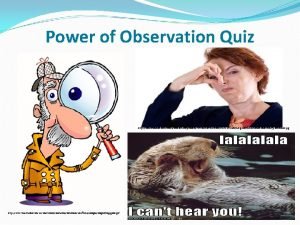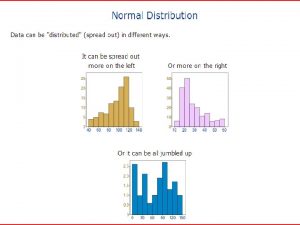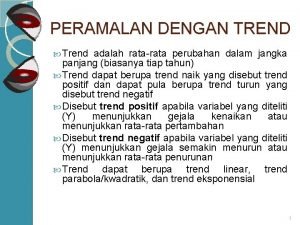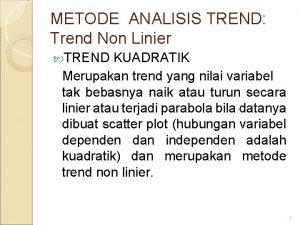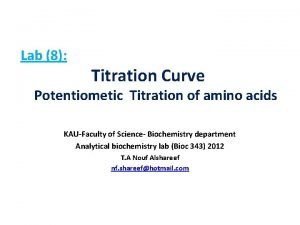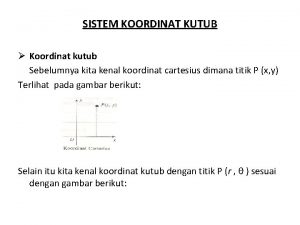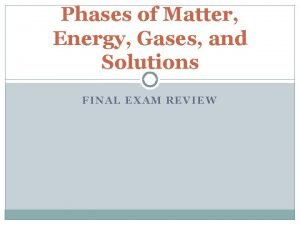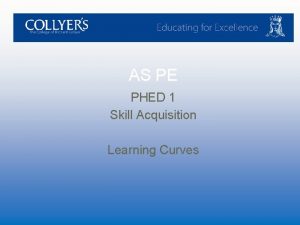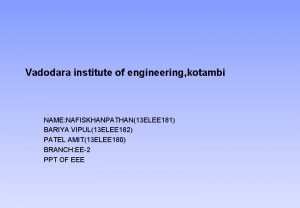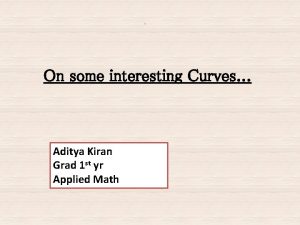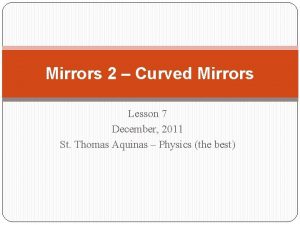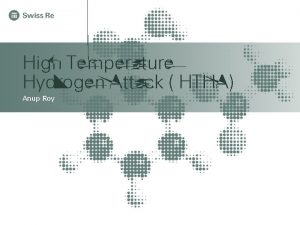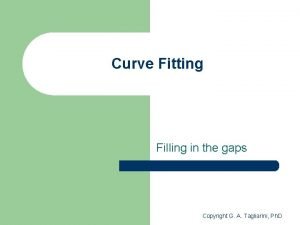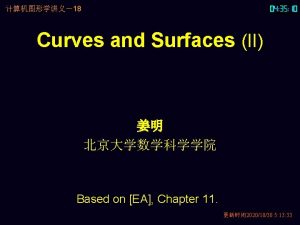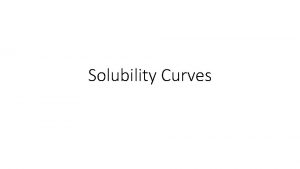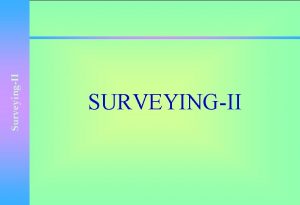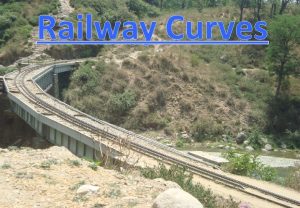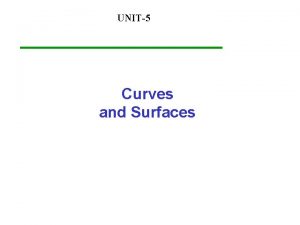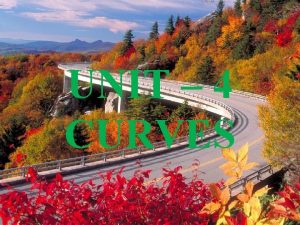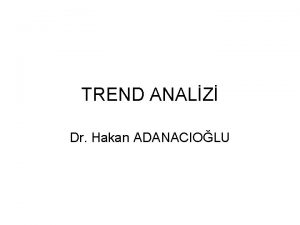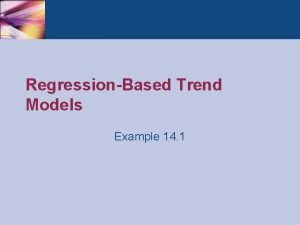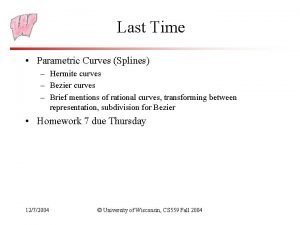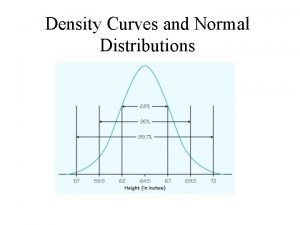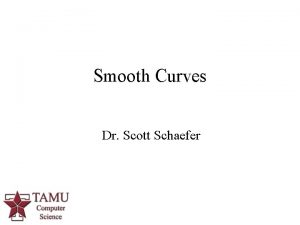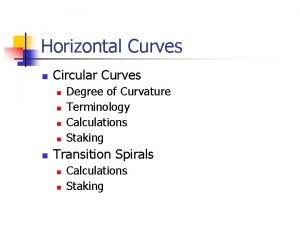Standard Trend Models Trend Curves Purposes of a



















- Slides: 19

Standard Trend Models

Trend Curves • Purposes of a Trend Curve: 1. Forecasting the long run 2. Estimating the growth rate

Standard Trend Curves • Key Properties: – have a simple form – have good track records – software for fitting is widely available

Types of Standard Trend Curves • For unbounded data: – linear – quadratic – exponential • For bounded (S shaped) data: – logistic – Gompertz

Unbounded Trend • Linear: Yt = b 0 + b 1 t + e • Quadratic: Yt = b 0 + b 1 t + b 2 t 2 + e • Log-linear: ln(Yt)= b 0 + b 1 t + e

Two Standard S Curves 1. Logistic Curve 2. Gompertz Curve

S – Curves (Life Cycle Theory) 4 Stages of New Technology Life Cycle 1. Slow growth at the beginning stage 2. Rapid growth 3. Slow growth during the mature stage 4. Decline during the final stage

S - Curves Point of Inflection Y second derivative = 0 Y(ln(a) /b) = g/2 for L Y(ln(a) /b) = g /e for G Concave Up Concave down ln(a)/b Time

Model Selection Process 1. Timeplot Linear / Quadratic Exponential (linear in log) 2. Take a log? (standard regression) No Yes Logistic / 3. Bounded? No Yes Gompertz/ (nonlinear regression)

Nonlinear Least Squares • SPSS is one of the few statistics packages that provide routines for fitting nonlinear regression models. • You have to provide initial estimates for parameters.

Getting Initial Parameter Values - Logistic Curve Estimate g from data, and compute Regress the variable on t.

Getting Initial Parameter Values - Gompertz Curve Estimate g from data, and compute Regress the variable on t.

Durbin-Watson Test

White Noise Residuals • WN (white noise) – uncorrelated Ex. et ~ WN(0, s) (weak WN) • iid – independent and identically distributed Ex. et ~ iid N(0, s) (strong WN)

Spurious Trend Downward Bias: Positive Auto. Correlated Residual SE of Coefficient SER

Trend Model With Correlated Residual

Durbin Watson Statistic

Some Key Values of DW Stat • E(DW) = 2 if H 0 • Table available for DW if H 0

DW Test • The Null and Alternative Hypotheses – H 0 : r = 0 – H 1 : r > 0 -> positive autocorrelated residual
 Msn quiz
Msn quiz Phi function table
Phi function table What is the difference between modals and semi modals?
What is the difference between modals and semi modals? Metode tangan bebas
Metode tangan bebas Metode trend kuadratik
Metode trend kuadratik Standard language vs home language
Standard language vs home language Difference between actual cost and standard cost
Difference between actual cost and standard cost Dskp
Dskp Rumus standar error rata-rata
Rumus standar error rata-rata Pi of alanine
Pi of alanine Polar chart
Polar chart How to read a solubility curve
How to read a solubility curve Learning curves in sport
Learning curves in sport Elee curves
Elee curves Interesting curves
Interesting curves Mirror that curves outward and use in convenience store
Mirror that curves outward and use in convenience store Atak rp 941
Atak rp 941 Fills in gaps in data and fit data into curves
Fills in gaps in data and fit data into curves 18 curves
18 curves Zoological riddles challenge
Zoological riddles challenge
